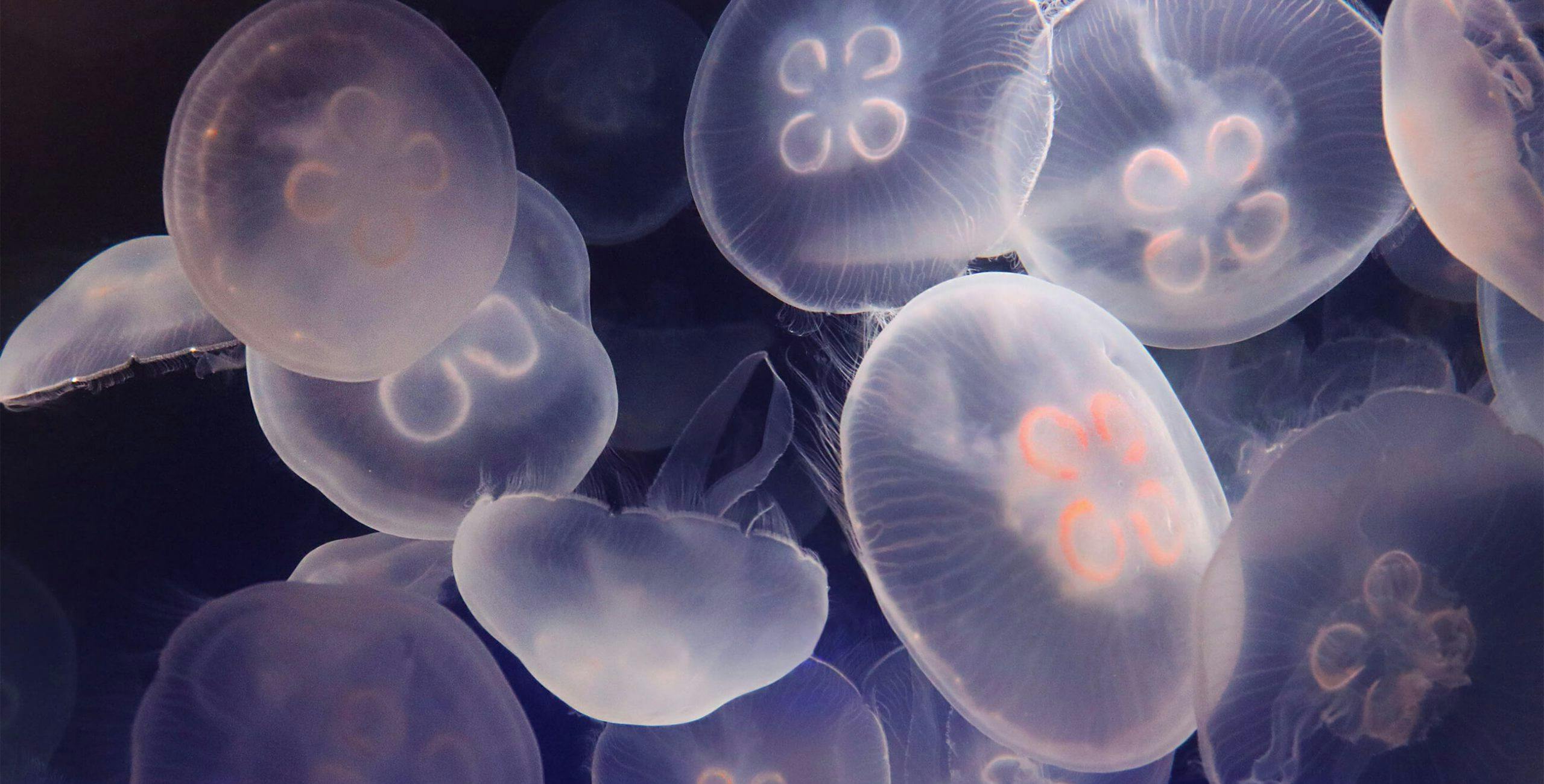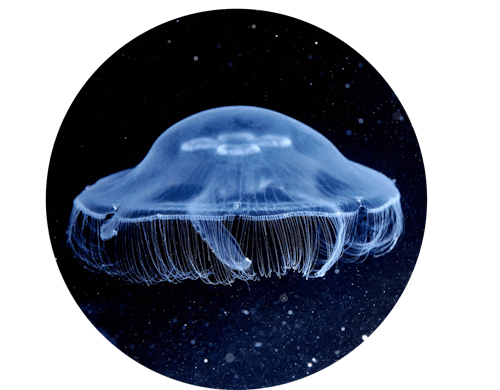Free Shipping on orders of $49+ | Signup for Direct Rewards
Free Shipping on orders of $49+ | Free Store Pickup | Signup for Direct Rewards
Free Shipping on orders of $49+ | Signup for Direct Rewards
Free Shipping on orders of $49+ | Free Store Pickup | Signup for Direct Rewards

Moon jellyfish are beautiful creatures found in oceans worldwide. They have see-through bodies shaped like a moon, with long trailing parts. These jellyfish are delicate and mostly made of water. They can glow in the dark, which helps them defend against predators.
Moon Jellyfish (Aurelia Aurita) are found worldwide and commonly known as Moon Jellies. These Moon Jellies are distinguishable by their four circular gonads visible through their transparent body. The gonads are the jellyfish’s reproductive organs and are normally pink or purple in color. They have short tiny tentacles all around the sides of their bell. These tentacles can catch small zooplankton and other small organisms. They can catch plankton using a layer of mucus over their bells, and then move the food towards their mouths using a special set of tentacles.

Moon Jellies are found in open waters usually floating just below the surface. They are not good swimmers though, they are easily carried by movement in the water and can end up on the shores of the ocean. Here in South Florida, we can see them everywhere. Jellyfish are 95% water, and have no brain, blood, or heart. Moon Jellies grow up to 25" in diameter and have short, fine tentacles. This is unlike most jellyfish that have long, thick, and potent tentacles. Moon Jellyfish are one of the least dangerous species of jellyfish in the ocean to come into contact with humans. Their tentacles do have stingers and can inject you with venom when coming into contact with your skin.
Many divers, locals, and tour guides will tell you that Moon Jellies don’t sting. This is actually untrue. Moon Jellyfish tentacles are covered with stinging cells called cnidocytes. These cnidocytes can immobilize their prey such as small fish and other food particles. The sting does little harm to humans though, this is why some will say they don’t sting at all. If you get stung, a small rash can develop, but disappear in a few hours.
After you’ve been stung, you should quickly rinse the area with seawater. Vinegar can also be used to remove all stinger cells and alleviate pain. Many dive charters will carry a spray bottle with vinegar if Jellyfish are common to the area. An anti-inflammatory cream can be used to alleviate the symptoms, and it is important to never use urine or alcohol on a sting as some people suggest.

Like the moon, Moon Jellyfish also have phases. They have two main phases of their life cycle. Adult male jellies release strands of sperm for the female. Once fertilized, the female will release larvae to settle on the ocean floor and grow into their first stage, polyps. These polyps grow upside down with clones of themselves stacked on top of each other. They will then morph into medusa and release one by one to begin life as an adult. Adult Moon Jellies are unlikely to live for more than 6 months in the open ocean. Even in captivity, they will only live for just over 1 year.
In 1991, about 2,500 Moon Jellyfish polyps and ephyrae were sent to space to orbit Earth on the space shuttle Columbia. Since they are translucent, they were used to study the effects of weightlessness on the development of internal organisms.
Overfishing, global warming, and ocean pollution reduce the moon jellies predators, and increase their prey. Therefore, their populations have seen a large increase in recent years.
Yes, Moon Jellyfish can actually sting. However, the sting is very mild to humans and symptoms should go away within a few hours.
Moon Jellyfish can be found in the ocean all over the world. However, they prefer warmer environments along coastlines.
Moon Jellyfish are translucent with four distinctly shaped gonads in their center. Unlike other jellyfish, they have very short tentacles and can grow up to 25 in in diameter.
Like other jellyfish, Moon Jellies use their bell to pulsate and move through the water. They are not very strong swimmers though, and can wash up along shorelines very often.